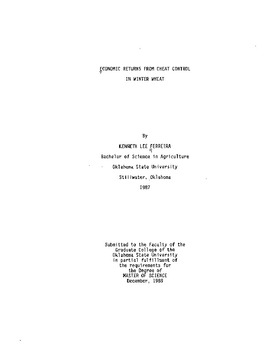| dc.description.abstract | Field experiments were conducted to determine the influence of winter wheat seeding date and forage removal on the efficacy of cheat control herbicides, forage and grain yields, and net returns to land, overhead, risk, and management for the various cheat control strategies. Economic analysis revealed that net returns were higher when wheat was seeded during the traditional seeding period than when seeded early for increased forage production or delayed for cultural cheat control. Some herbicide applications provided an economic benefit at two of three locations where the initial cheat population exceeded 170 plants/m2 . Nomenclature: Cyanazine, 2-[[4-chloro-6-(ethylamino)-1,3,5-triazin-2- yl]amino]-2-methylpropanenitrile; ethyl-metribuzin (BAY SMY 1500), 4- amino-6-(1,1-dimethylethyl)-3-(ethylthio)-1,2,4-triazin-5(4tl)-one; metribuzin, 4-amino-6-(1,1-dimethylethyl)-3-(methylthio)-1,2,4-triazin- 5(4tl)-one; cheat, Bromus secalinus L.# 3 BROSE; wheat, Triticum aestivum L. | |
